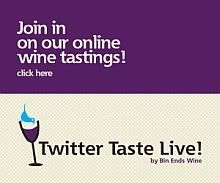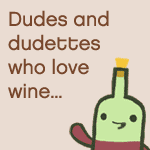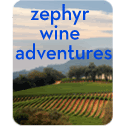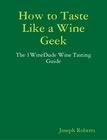
Whoops.
Everyone makes mistakes. In the case of the Dude here, mistake frequency is pretty much daily. Thankfully, almost every mistake is an opportunity to learn.
Fortunately for you, the Dude here has made plenty of mistakes when it comes to drinking and appreciating wine. That means that you don't have to make all of those same mistakes, my friend! You can thank me later (preferably with a bottle or two of `82 Mouton...).
Anyway - following are Top 5 of the most common mistakes in wine drinking and wine appreciation that I've come across (or made myself) during my life dabbling in the wine biz. Hopefully these help you to avoid the same... Filling that glass to the brim is being generous only in the extra amount of calories that you're consuming. It's a killer for wine enjoyment because a) it prevents the wine's aromas from being concentrated towards your nose (where they belong), b) it prevents you from swirling the wine in your glass (which releases those wonderful aromas and flavors in the first place) and c) it makes you much more likely to spill your wine (and you probably paid good money for it!).
Filling that glass to the brim is being generous only in the extra amount of calories that you're consuming. It's a killer for wine enjoyment because a) it prevents the wine's aromas from being concentrated towards your nose (where they belong), b) it prevents you from swirling the wine in your glass (which releases those wonderful aromas and flavors in the first place) and c) it makes you much more likely to spill your wine (and you probably paid good money for it!).
At this point you're probably thinking, "Wait a second Dude - waiters do the Over-pour all the time in restaurants. What am I supposed to do about that?" Simple: ask for a second (empty) wine glass. Now you have two glasses of wine that you can fill properly (which basically means filling to the bowl shape of the glass and not beyond). You're welcome!"Filling that glass to the brim is being generous only in the extra amount of calories that you're consuming."
In a word - Yuck.
Now, you don't need to be too anal about this one, but to get the most out of your wine, you do need to get the wine temperature in the right ballpark - and the right ballpark is different depending on they type of wine you're trying to enjoy. Sweet whites and sparklers usually stand up to the coldest temperatures; hefty reds like Zinfandel and Port can withstand the highest temps. For more specific information, check out this handy chart of wine serving temps from recipetips.com.
If you already know the wine and think it's a good buy, then you may have found a good deal in that end-bin. While it's certainly possible to catch a great bargain, I've also seen on many, many occasions wines that are woefully past their prime stuck into the end-bin at steep "discounts". Don't totally ignore those end-bins - but it's a big mistake to make those the only stops on your foray through the wine store."...the end bins are sometimes where good wines go to die..."
A thick, flavorful sauce can turn a lighter dish into a heavy monster of a meal. So, if you're pairing a lighter wine with that heavier sauce, you might not ever get to really taste that wine, as it will get totally overpowered. Epicureans take note! Not doing any homework. You by no means need to have fancy-schmansy wine certifications to appreciate wine. But a little knowledge about wine styles and wines from different areas of the world can arm you with a very important weapon when it comes to wine enjoyment: Context.
Not doing any homework. You by no means need to have fancy-schmansy wine certifications to appreciate wine. But a little knowledge about wine styles and wines from different areas of the world can arm you with a very important weapon when it comes to wine enjoyment: Context.
What do I mean by context? I mean knowing what some of those wines typically taste like, and what foods are typically enjoyed with them. This allows you to avoid a whole heap of mistakes when it comes to wine appreciation, because it means you're more likely to taste the wine in its proper context. Someone can tell you that they hate Italian wines - and if that person tried those wines with super-spicy Thai food instead of Italian cuisine, they're probably not giving that poor Italian wine a fighting chance to be liked!
Grab yourself a book and get in some wine learning. Take a wine class, practice your tasting, or host a wine tasting party. The important thing is to keep an open mind about wine, and be willing to learn - in terms of helping you avoid the most common wine drinking foibles, those two things will never let you down.
Cheers!
(images: chichesterdesign.co.uk, comparestoreprices.co.uk, oleswanson.com)
5 Common Wine Drinking Mistakes (And How to Avoid Them)
Related Articles (Sphere)
Vinted on
Friday, May 09, 2008
Email This
![]()
Labels: best of, mistakes, wine and food, wine appreciation, wine buying, wine tasting, wine tips
Subscribe to:
Post Comments (Atom)



























3 comments:
Good point about End-Bin shopping. Although I've come across a few great finds, I found most end-bins filled with wines hopelessly past their prime, especially when it comes to Chardonnay!
The Wine Dude speaks sooth. Additionally, know your merchant. You’ll get to know his pattern about wine specials. Sometimes the special is to attract attention and get people in the door, sometimes it to move a dog. Experience with the merchant will tell.
Ditto on the sauce and reading up!
So much of a dish's flavor comes from the sauce, that it should never be forgotten when thinking of a wine to pair.
Reading about a particular wine or variety or whatever relevant tidbit at the time of tasting or before a tasting event is case-based learning. It's the ideal way to accumulate wine knowledge - a small morsel at a time.
Post a Comment